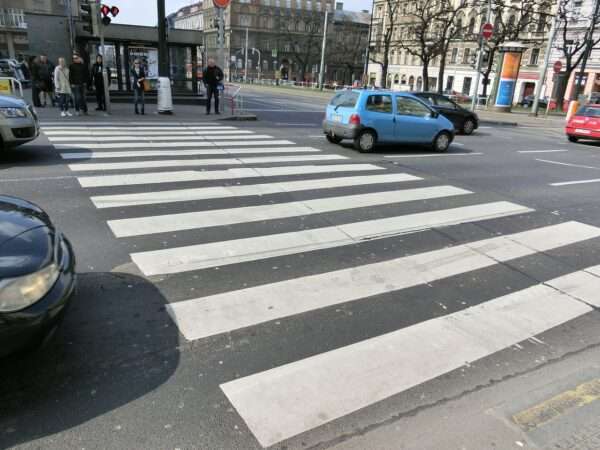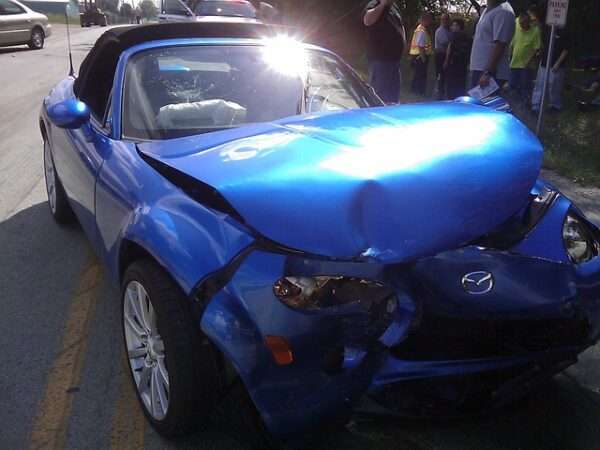Unfortunately, pedestrian accidents are on the rise in big cities such as Boston. This guide delves into pedestrian accidents in Massachusetts, including the most dangerous locations, unsafe road design, and scenarios leading to serious injuries, pedestrian fatalities, and highlights the necessity of safe streets and safe pedestrian crossing infrastructure, such as appropriate speed limits, traffic signals, and crosswalks.
Common Types of Pedestrian Accidents
Pedestrian-involved crashes in Massachusetts occur in various high-risk scenarios, each presenting distinct dangers:
- Parking Lots: These areas see frequent incidents where drivers, either reversing or hurrying for spots, collide with pedestrians, underscoring the risks in such spaces.
- Intersections: Despite crosswalks and traffic signals aimed at ensuring pedestrian safety, driver errors at intersections are a common cause of accidents.
- Sidewalks: Incidents on sidewalks involving impaired or distracted drivers reveal the vulnerability of pedestrians in supposed safe zones.
- Nighttime Risks: Diminished visibility during the night significantly increases the peril for pedestrians, emphasizing the importance of vigilance after dark.
Understanding Negligent Driving and Pedestrian Protections
Massachusetts has strict road safety laws to safeguard pedestrians, especially in urban settings. The Massachusetts Driver’s Manual mandates that “drivers must yield to pedestrians in roadways”, emphasizing the necessity for drivers to remain vigilant and prioritize pedestrian safety at all times. Moreover, it is required that drivers maintain reasonable speeds, particularly in densely populated or “thickly settled” areas, to mitigate the risk of fatal pedestrian crashes and serious injuries. When crosswalk signals are not in place or in operation, a driver must yield the right of way to a pedestrian crossing the roadway within a crosswalk. Massachusetts General Laws Ch. 89, § 11
Key Factors Influencing Liability in Pedestrian Accidents
Assessing liability in accidents involving pedestrians and vehicles requires evaluating various factors to understand the accident’s context. Your experienced pedestrian accident attorney will investigate the circumstances of how the accident occurred to demonstrate how a driver’s failure to comply with established traffic safety norms, such as speeding or failing to yield, directly contributed to the accident. These factors include:
- Accident Details: Important elements such as the date, time, and precise location of the incident, notably in areas with high pedestrian traffic.
- Pedestrian Positioning: Whether the pedestrian was within a crosswalk, aligned with crosswalk lines, and their proximity to crucial road markers such as double yellow lines.
- Right of Way: The status of crosswalk signals (“Walk” sign visibility) and the pedestrian’s motivations for crossing are significant in determining fault.
- Driver’s Conduct: Factors considered are the visibility of the driver’s car to the pedestrian, the vehicle’s speed, and compliance with turn signal use.
- Environmental Conditions: Weather, lighting conditions, and any potential distractions (e.g., smartphone usage) that could impact both pedestrian and driver behavior at the time of the accident.
In situations where the pedestrian may have contributed to the accident, Massachusetts’ comparative negligence law may adjust the compensation relative to the pedestrian’s degree of fault.
Comparative Negligence in Massachusetts: When Pedestrians are partially at Fault
In most cases, negligent drivers are held to be responsible in a pedestrian vs. car accident due to failing to pay attention, speeding, or failing to give a pedestrian the right of way. However, pedestrians can also play a role in causing accidents by:
- Ignoring crosswalks and traffic signals,
- Jaywalking,
- Venturing into areas where pedestrian access is restricted,
- Abruptly stepping into the street into the path of an oncoming vehicle.
Massachussets follows the Modified Comparative Fault system, meaning the injured pedestrian is only able to recover damages if they were less than 51 percent at fault. If the injured pedestrian is found to have contributed 51 percent or more to an accident, they are not entitled to recover at all. However, the pedestrian is only found to be partially at fault (less than 51 percent), that Plaintiff can still collect damages, however there will be a proportional decrease in the compensation awarded. For example, if the evidence indicates a pedestrian violated traffic rules and is decided to be 10% responsible for the accident, any damages they are awarded will be reduced by 10%.
Legal Recourse
Addressing the aftermath of deadly pedestrian crashes due to a negligent driver encompasses investigating the accident scene, obtaining necessary evidence such as surveillance footage, photos and witness statements, as well as contending with the driver’s insurance company, and ensuring pedestrian victims are awarded fair compensation for their serious injury, medical expenses, lost income, any scarring, and potentially long term disabilities. At Gavagan Law, we are dedicated to advocating for the rights of pedestrian accident victims. From dealing with insurance companies, adhering to the statute of limitations, to representing you in negotiations or at court, we strive to ensure that negligent drivers are held accountable and that you receive the compensation you deserve. Contact us for a free consultation and an opportunity to discuss your case with an experienced personal injury attorney.



